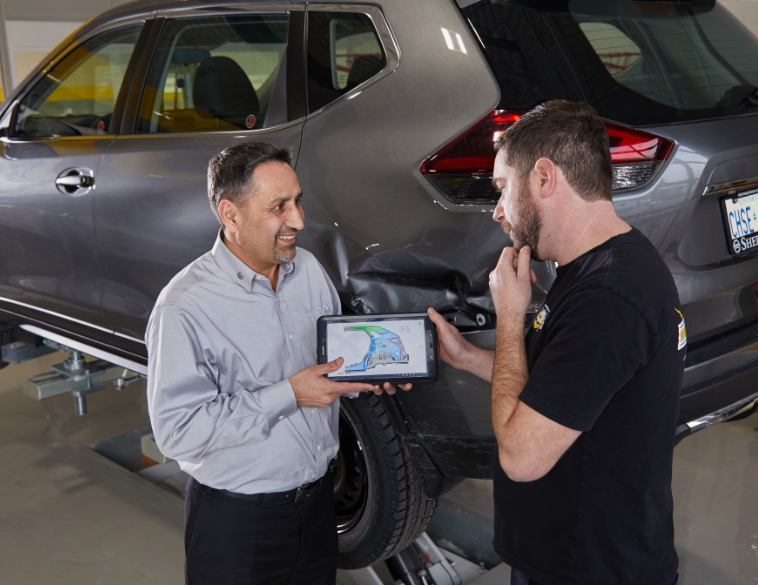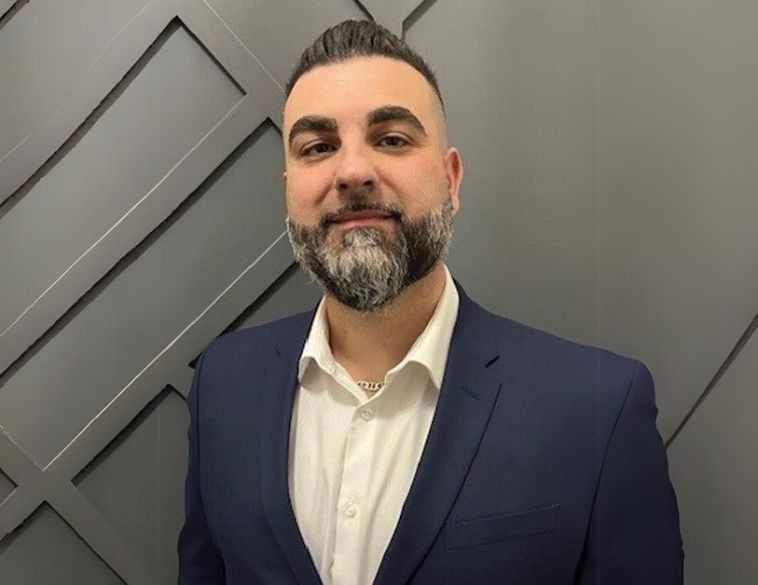Advancing vehicle technology is resulting in an ever-greater overlap between collision and mechanical repairs.
Over the last two decades, we’ve seen an exponential increase in vehicle complexity. The past 10 years alone have witnessed widespread adoption of Advanced Driver Assist Systems (ADAS) that include everything from adaptive cruise control to active braking, steering assistance, cross-traffic alert, and blind-spot monitoring systems.
The result has been a growing need to ensure vehicles are repaired properly. The “properly” aspect is something that can be easily overlooked, explains Johnny Kloeckes, who owns and operates CARSTAR Edmonton Gateway, CARSTAR Edmonton South East, CARSTAR Ellerslie, CARSTAR Edmonton Mayfield, CARSTAR Leduc North, CARSTAR Express Edmonton South. “Before, if there wasn’t a dash light on [in the vehicle] you were fine,” he says. “Today, however, a fault won’t necessarily show up on the instrument panel–you need a thorough diagnostic process to review the repair and ensure that it’s completed properly.”
Essential process
There’s also the fact that today, for a vehicle to perform as intended, mechanical as well as collision diagnostics is essential, given the integration of ADAS features. Yet when looking to partner with a mechanical repair facility for the work, collision repairs need to make sure that the shop in question has the required tools and training to perform advanced diagnostic repairs. In Kloeckes’ case, he says being a multi-shop operator offers some advantages. “I can [either] partner with a premier facility that knows I will give them volume or I can create my own mechanical centre.”
Because OEMs now require very specific requirements when it comes to collision repairs, plus the fact that vehicle complexity makes the process more challenging for technicians, preparation is key, says Satwinder Mangat, President of ALLDATA. Additionally, both collision and mechanical shops now need to conduct pre and post-scans to reduce their risk of liability, which is why greater integration between repairs on both sides increasingly makes sense. And it’s one reason why companies like ALLDATA offer a complete, full-line suite of solutions that cover both collision and mechanical repairs, with seamless integration backed by solid technical support, like ALLDATA Collision, ALLDATA Diagnostics (which can be accessed by estimators), and ALLDATA Collision advantage, which provides fast, accurate estimates the first time around.
This is especially important considering that modern ADAS covers just about every aspect of vehicle operation. “Repairs that were once considered routine will trigger multiple ADAS system requirements due to advanced safety and convenience features,” says Mangat. “Camera-based system technology will require calibration due to tire replacement, suspension work, engine modifications, steering system repairs, outside rear-view mirror replacement, or even a simple wheel alignment.”
Central area
According to Domenic Prochilo, Vice President at Simplicity Car Care, having a central area in your facility where both collision and mechanical repairs can be effectively managed will result in an organized and standard process for each repair that comes in.
Prochilo also notes that shops that implement a strategy like this see multiple other benefits, including increases in year-over-year sales, decreasing cycle times, diversification of labour and fees, as well as proven ROI on tools and technology investments, plus improved overall gross margins.
Prochilo believes that given the way the automobile and collision repair industries are evolving, greater integration between mechanical and collision repairs will become more prevalent. In my opinion, diagnostics will have an equal share of mechanical and collision services,” he says. “As internal combustion engine (ICE) vehicles become more historical than mainstream, the Automotive Aftermarket will need to be prepared to move from oil/lube and filter services to Camera and Radar calibrations, plus satellite downloads (similar to an update on a cell phone). These services will require training for a new skill set of services and an investment into tools and technology.”
Making it all work
While there is a need for greater integration between collision and mechanical diagnostics and repairs in the modern collision shop, theory is one thing, practice, another.
For one thing, doing the work properly on each side requires proper training and consistent practice and today, there is little interchangeability between collision and mechanical repair skills. “Thirty years ago, an auto body technician could remove and replace suspension once in a while,” says Johnny Kloeckes. “Now, it requires an up-to-date trained auto technician along with the proper tools and equipment to do that job.”
In collision circles, he likens it to a body technician trying to paint a vehicle once a month. “We would expect the quality wouldn’t be as good as a certified painter who paints regularly simply because they have more experience.”
As a result, he says, autobody repair technicians can’t be held to the same task. “They cannot fix ADAS systems once in a while, because it’s a craft—a skill that is completely different than autobody.” That’s why he says, there exist separate licensing requirements for refinishing, autobody repairs and mechanical repairs.
And, as technology advances it is highly likely we will see more certifications for specific ADAS and sensor-related repairs.



